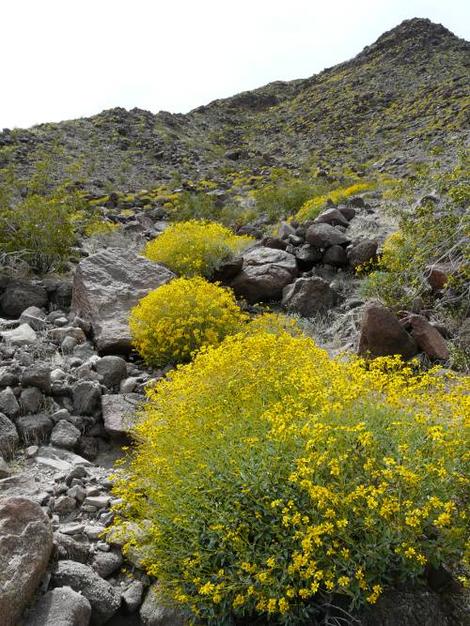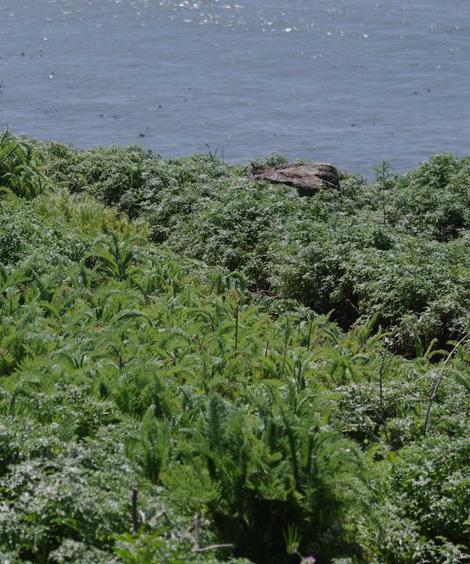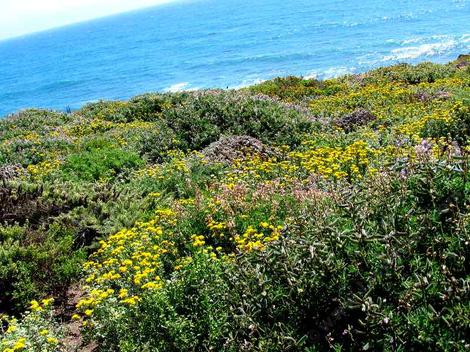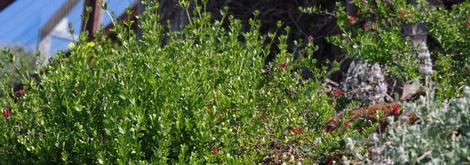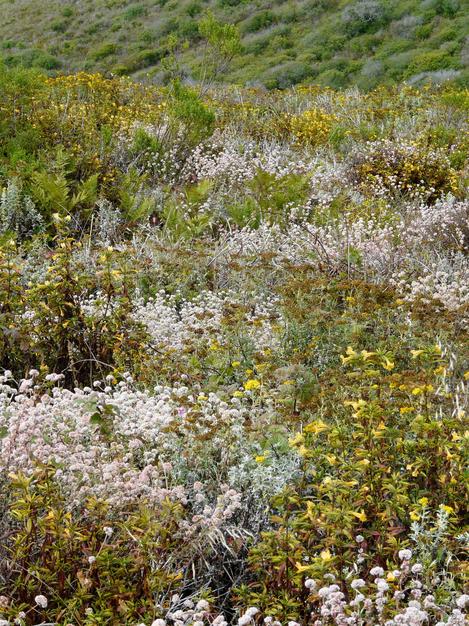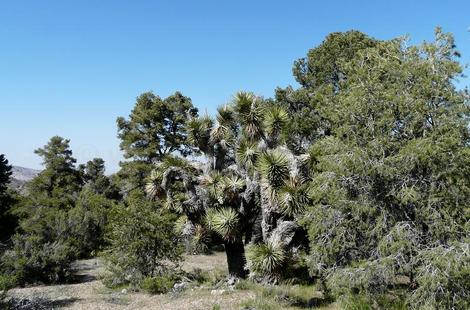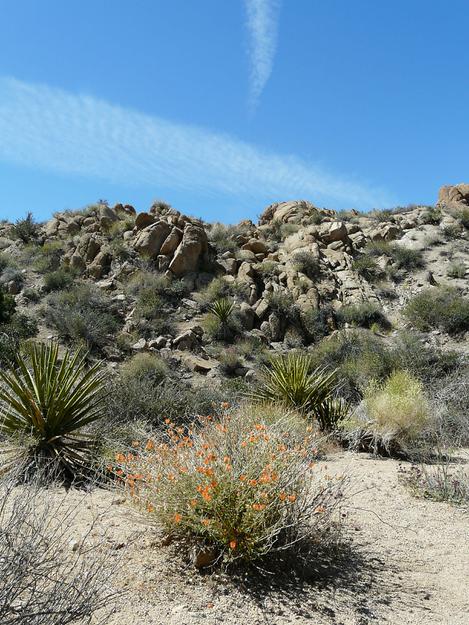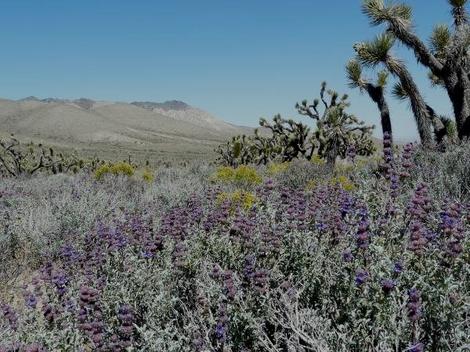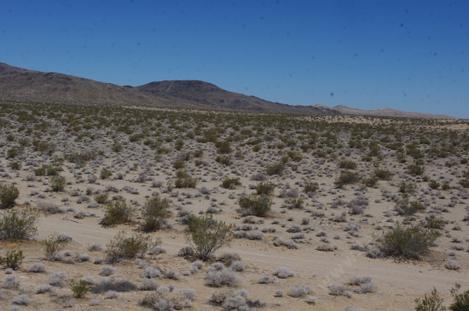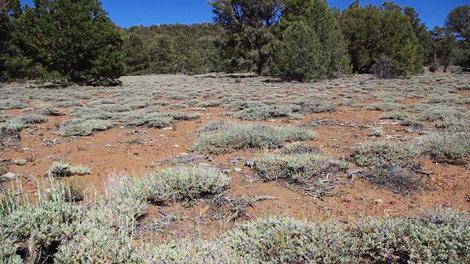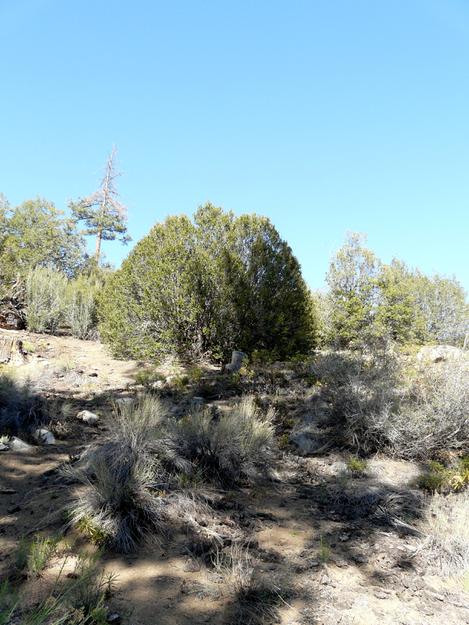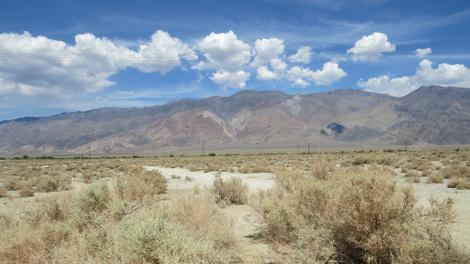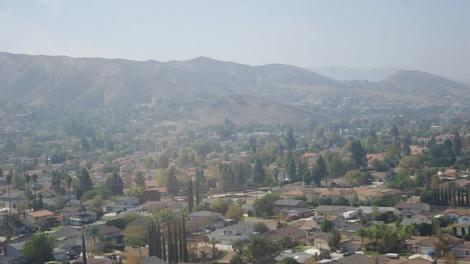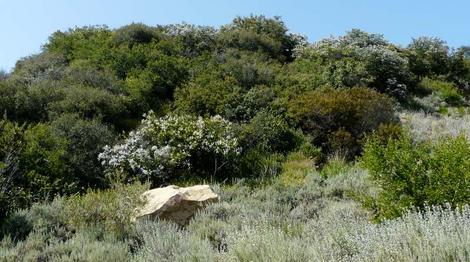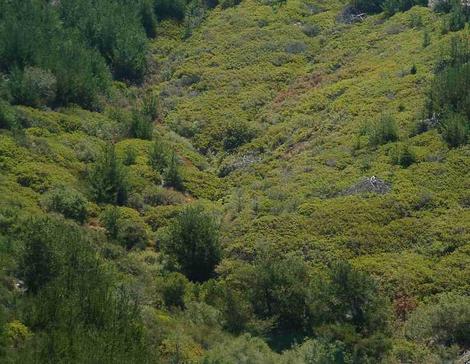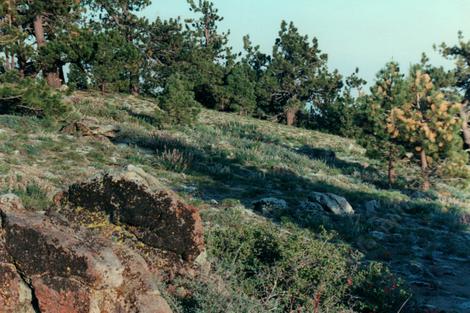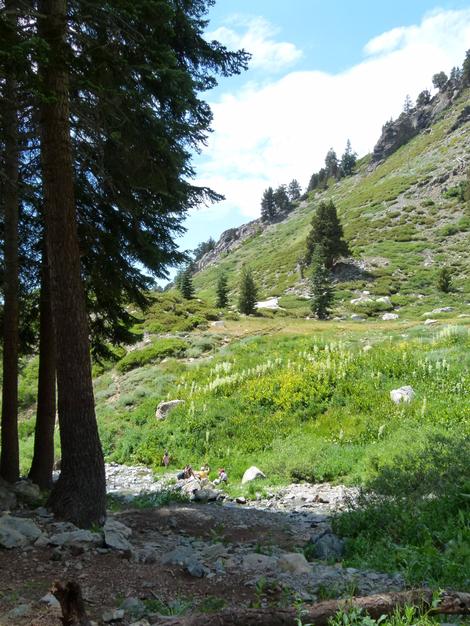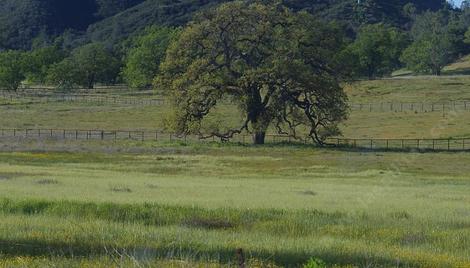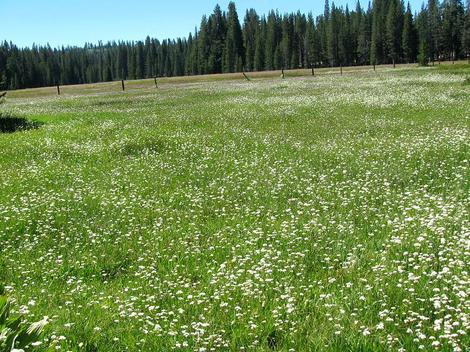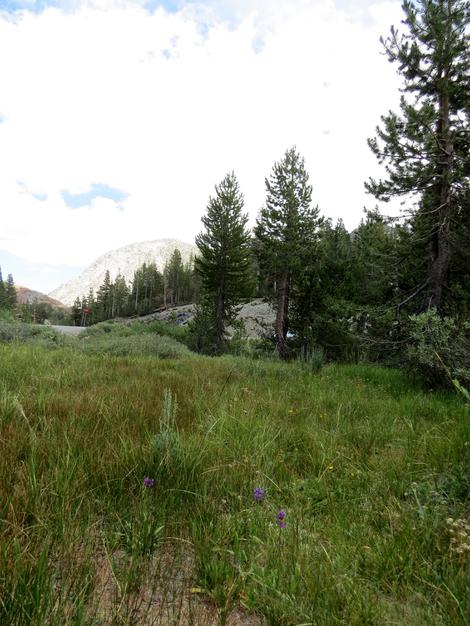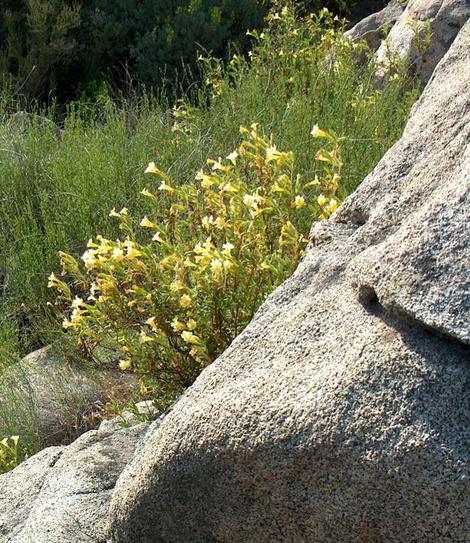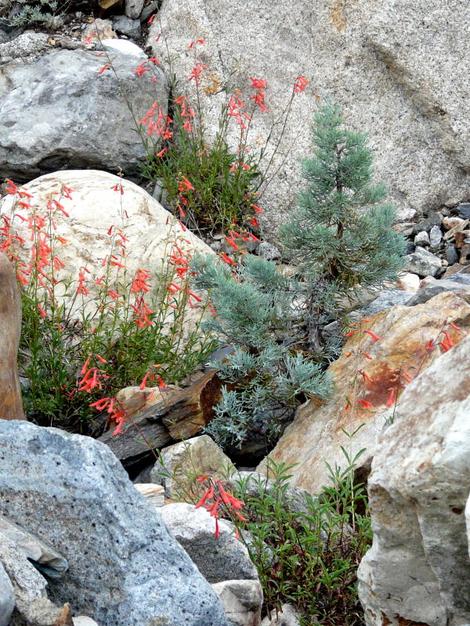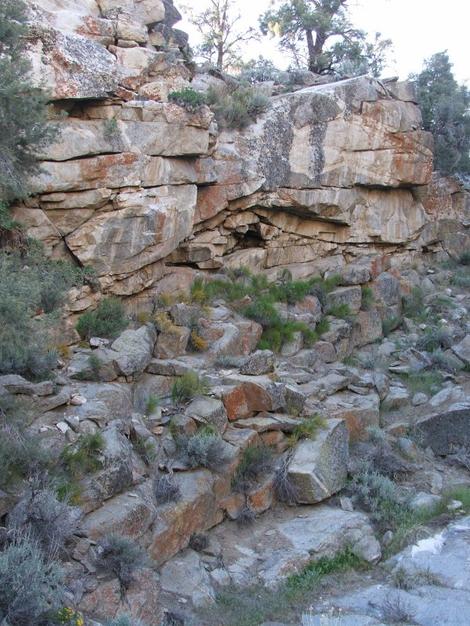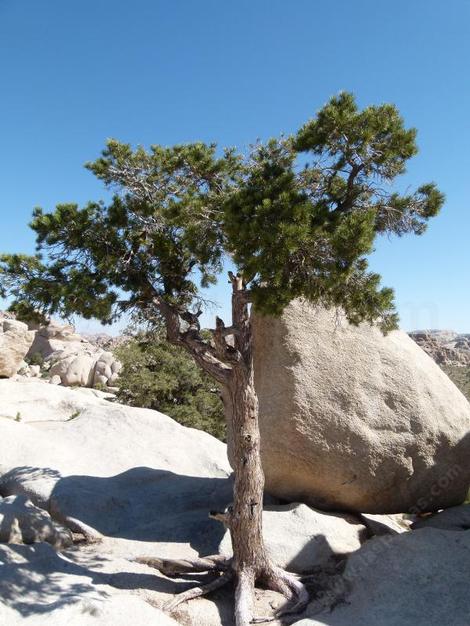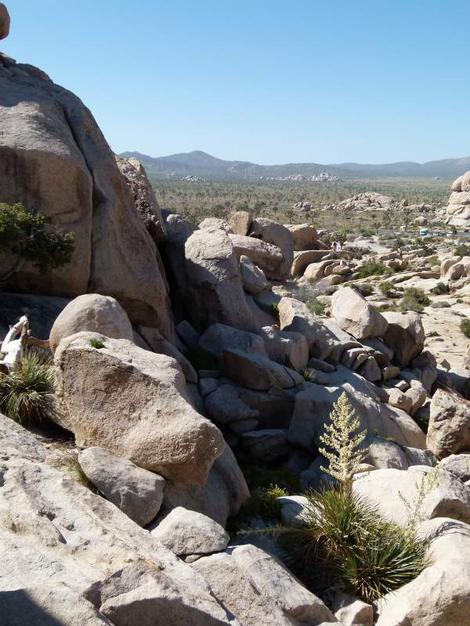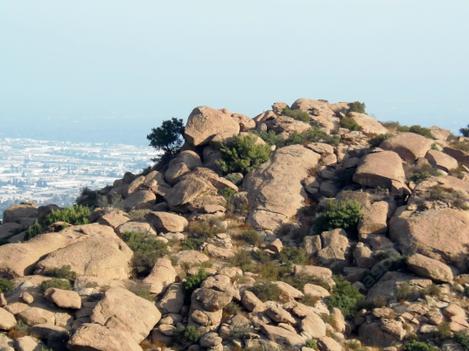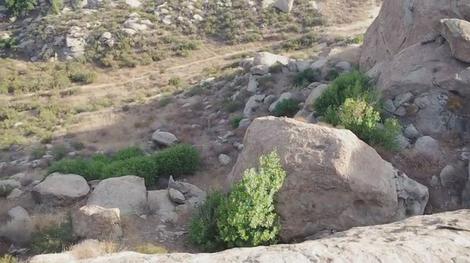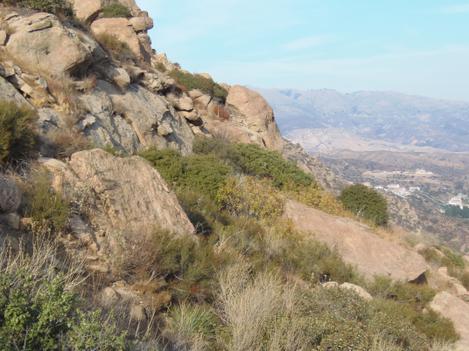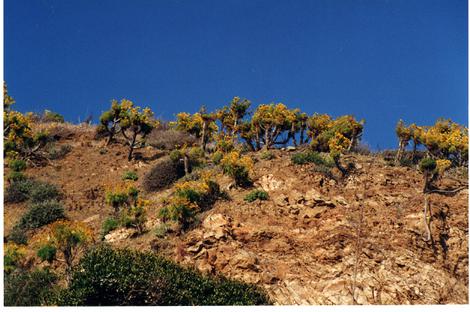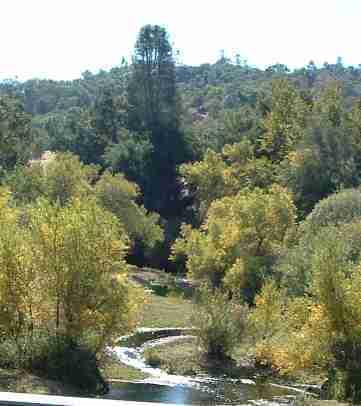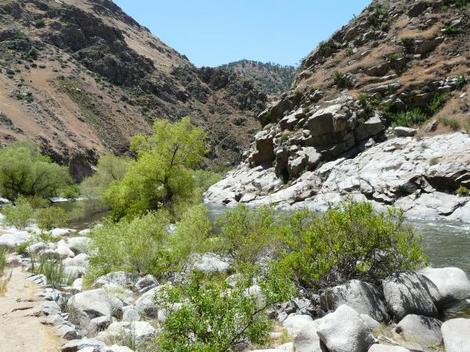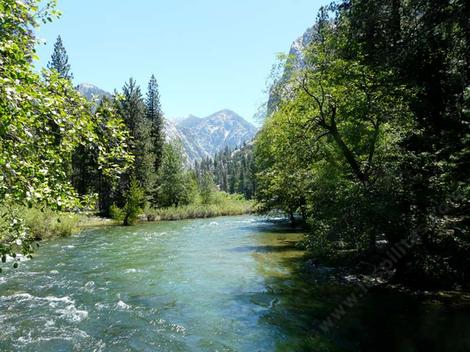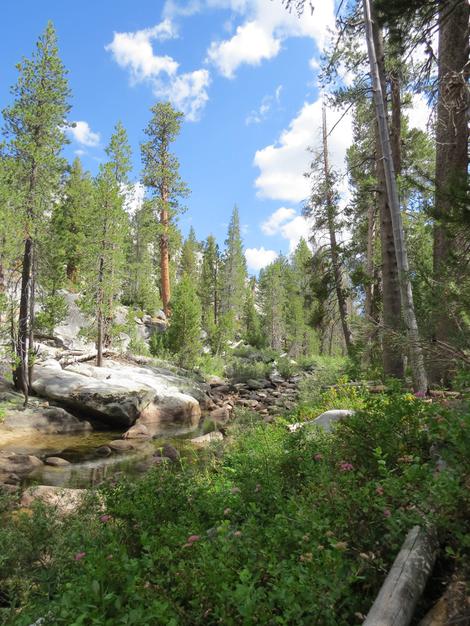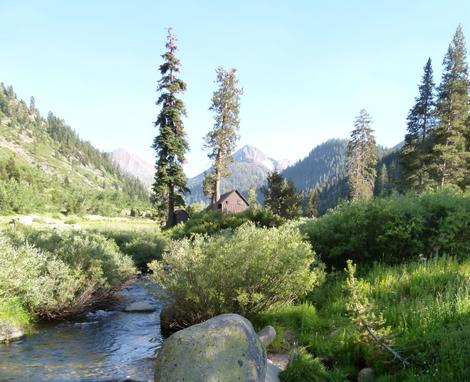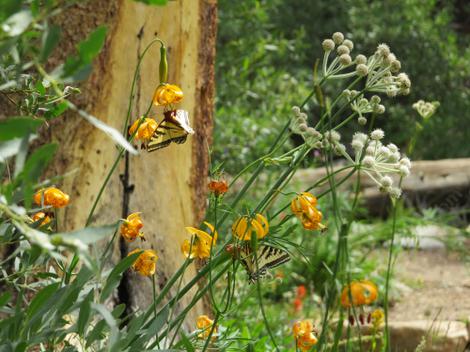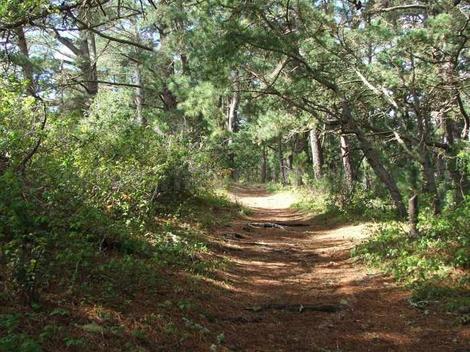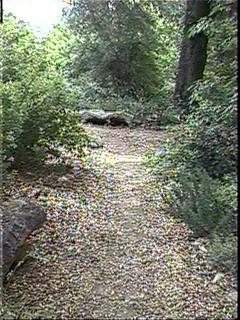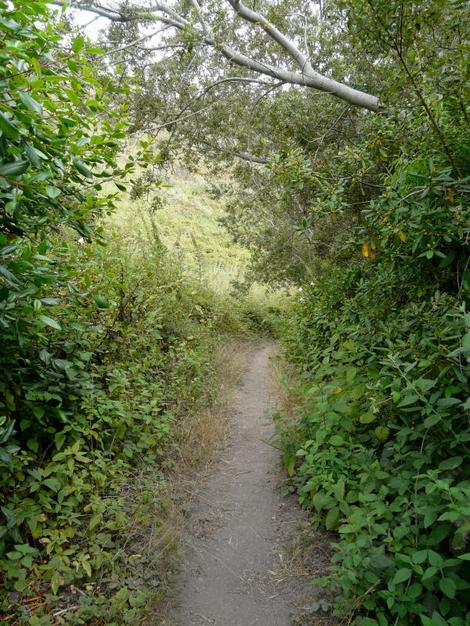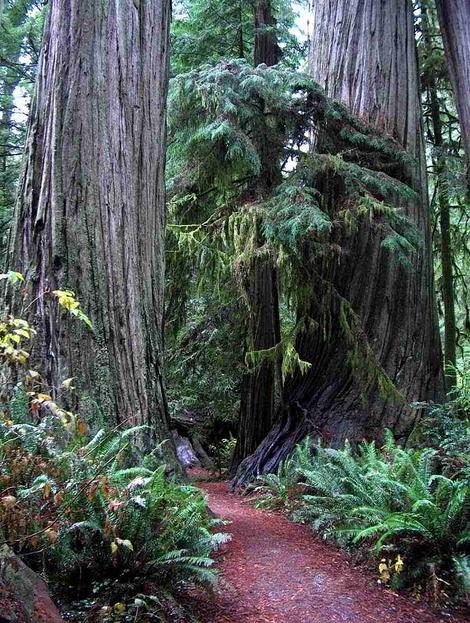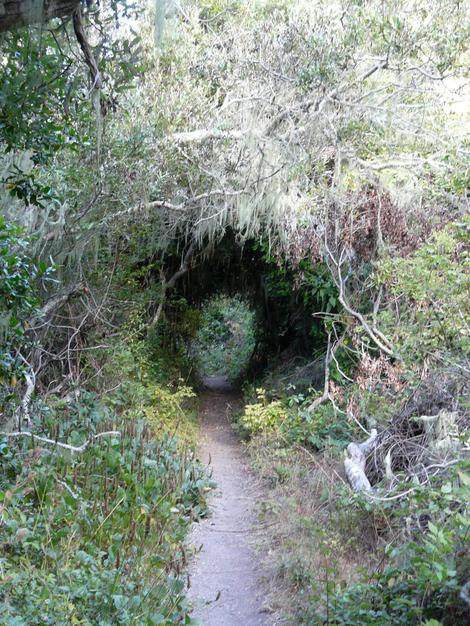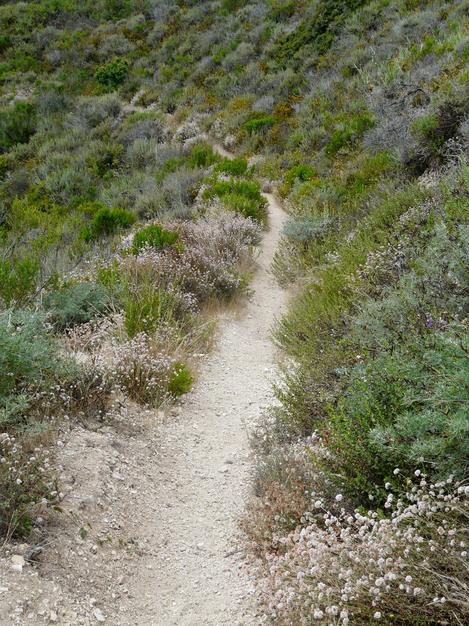Native Landscaping ideas.
Here are some landscaping ideas showing examples of native plants in their element. We find this useful to match up to a hillside or garden slope.
If you're landscaping a slope in Barstow, here's an example, if you're
planting a hillside in Los Angeles here's an example of that. I'll try to
add more examples and ideas as we find them.When I used to design gardens I'd think of plants in the nursery and images in my mind like some of these places I've seen and compare to the possible vision of the garden I was designing.
Native landscapes should be weed free. There should be very limited irrigation for the upland plants, and no drip irrigation (except for marsh plants). Appropriate mulch is required and the soil should not be amended.
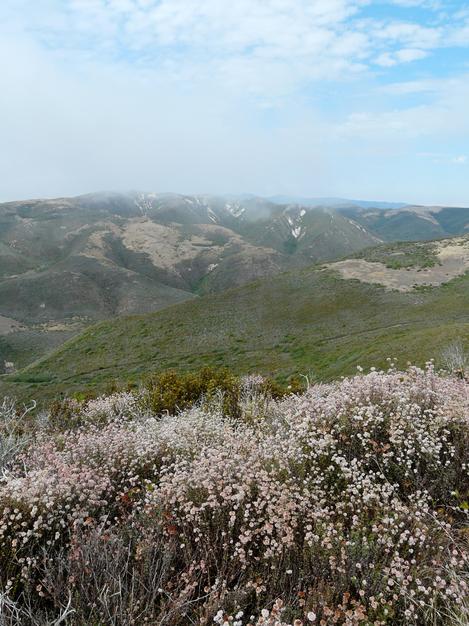
When the native landscape is replaced with weeds the yearly precipitation rate commonly drops to half of what it was before, erosion increases and stream flow decreases.
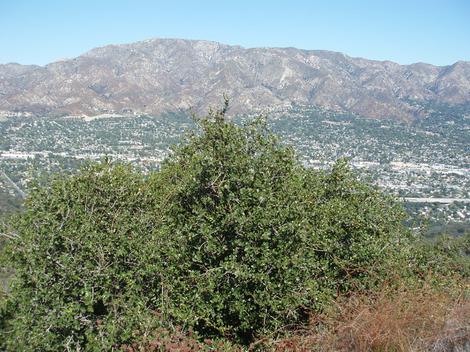
The brown hillsides around Los Angeles are the non-native weeds. The green spots are the remaining native plants. The native plants burn slowly, the non-native plants flash. A thinned landscape of weed free native plants is generally safer than a mowed slope of non-native plants. (Because of spot fires.)
The Brown hills are why a native landscaping attracts so many hummingbirds and butterflies, they have no where else to go.
The Brown hills are why a native landscaping attracts so many hummingbirds and butterflies, they have no where else to go.
California has very diverse native landscaping ideas out there for you to explore. This was on the east side of the Sierras just above the desert.

